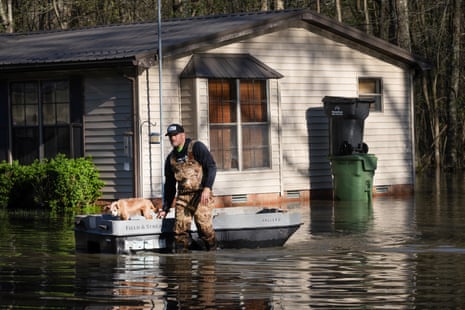How Climate Change Intensifies Extreme Weather Events in the US
Climate change is increasingly shaping the weather patterns we experience across the United States. Recent events show that what once were rare occurrences are rapidly becoming more common. Scientists are now certain that the warming climate leads to more severe and frequent extreme weather events. In this article, we'll dive into how climate change is driving these changes and what it means for communities across the country.

How Recent Storms Illustrate Climate Change Impacts
In early April 2025, an intense storm system struck parts of the central Mississippi Valley. The resulting rainfall caused devastating floods, leading to significant property damage and tragic loss of life. Scientists from the World Weather Attribution group found that human-caused climate change made this four-day rainfall event 40% more likely and about 9% more intense compared to a pre-industrial climate. The evidence points to warmer ocean temperatures and increased atmospheric moisture as major factors. According to The Guardian’s analysis, surface sea temperatures were 2.2°F higher, making such conditions 14 times more likely today than before widespread fossil fuel use.
The Science Behind More Intense Floods
As our planet warms, the atmosphere can hold more moisture. This increased moisture feeds storms, resulting in heavier rain and more severe flooding. The April storms affected multiple states, including Arkansas, Kentucky, Tennessee, and Missouri. Over just a few days, these areas experienced record rainfall, flooding homes, sweeping away vehicles, and disrupting lives. The NBC News report explains that these events now have a much higher probability of occurring and have grown in intensity, making them less of a "once-in-a-century" occurrence and more of a semi-regular threat.
Regional Changes and Local Effects
Communities in Kentucky and Arkansas, among others, have seen measurable increases in annual rainfall over recent decades. Kentucky, for example, has warmed by about 1.8°F since record-keeping began. The state’s top 10 wettest years all occurred since 2011. These patterns are echoed in other states affected by the storms. According to a local Arkansas news outlet, the chance of similar storms is expected to rise unless we quickly cut greenhouse gas emissions.
Preparing for an Uncertain Future
The April storms demonstrate why investments in weather forecasting and public safety are critical. Experts warn that staff cuts at the National Weather Service could increase risks in future events. Stronger, more frequent storms demand robust forecasting to keep communities safe. As climate change continues to accelerate, it's essential to support the agencies and resources that help save lives and property.
Conclusion: Facing the Challenge of Climate Change Together
Climate change is not a distant problem—it’s affecting the US in visible and destructive ways. The evidence is clear: more floods, stronger storms, and growing risks to communities. By understanding these changes and supporting solutions, we can help protect our homes and future generations. To learn more about the science behind these events, visit credible coverage from The Guardian and NBC News.